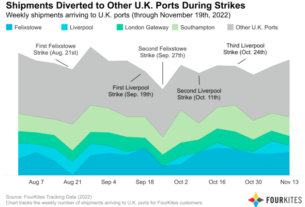Supply chain operations often take the backseat when it comes to innovation and upgrades compared with functions that face the customer and consumer. Companies prefer to leave these processes unchanged whenever they work and often usually intervene only after something bad happens. But active measures need to be taken to protect the most valuable resources, tools and ideas. We spoke to Pat Mathavan, Patent and IP Attorney for Tompkins Robotics, about change, how companies can protect their intellectual property and more.

Get more supply chain and logistics insights within our April digital magazine. Insights from Logistics UK, Ecoveritas, DP World, JLL, and more.
‘If there is a problem that has been present for a while and your company comes up with something that solves it and increases productivity, reduces costs and time, that might be a good fit to patent,’ explains Pat.
People come up with ideas all time and some of them bring a very incremental change. ‘Maybe you have done something to reduce the number of people needed for a task by one.’ Pat starts, ‘That would be best left unpatented as a patent costs money and your benefits would not be much.’
London Logistics Networking
Just one month left until our networking & round table event starts in London together with: Descartes Systems Group, Zedify, and Backhouse Jones.
Join us for a morning of insightful conversations, informal talks and share your opinion and views on hot logistics topics.
We will be talking about:
- Fleet management to control pollution
- Hub creation & maintenance: how to make it greet
- Green contracts: getting logistics ready for an ESG future
We are our speakers are excited to welcome you on the 24th May in London!

However, if an idea has brought a significant cost saving, then businesses need to take a careful look and protect it.
In addition, if the idea is very specific to your operations and can only be executed in combination with other specific settings, a patent may not be needed. It is not just about a good idea that saves money. If it is unlikely to be replicated by someone else and applied in their operations, there is no need to spend money on patenting.
Novelty is one of the key components of patenting. Under patenting law in most countries, an idea needs to be not just new to the creator but to the whole world. ‘I might have invented something by myself, but if someone else had already done it in another part of the world, it can’t be patented. This is regardless of whether you knew about it or not.’
‘Ask if your idea will be applicable to just your environment or not,’ Pat goes on. He also covers licensing, which can be useful for companies looking at markets in which they are not yet present. Organisations can protect themselves by licensing their ideas outside their home market.
Patenting Outsourcing
Companies might struggle with making their ideas a reality. What they can do is hire prototype companies who can work on a prototype on behalf of the original idea creator. This saves money and time, and also outsources the process to someone who can test and determine whether a product is good or not. Usually the prototyping firm assigns all right to the company that hired them.
When to patent an idea is also important. Different companies approach it in different ways. Some patent the idea without having created a prototype or conducted any tests. Others work under non-disclosure agreements and only file a patent application after they have proven the product is viable. ✷



